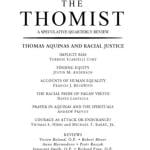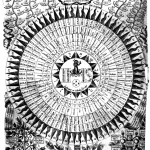Since we’re on the topic of Catholic feminism, I want to take up this post that a friend recently tweeted, from the consistently interesting “Women in Theology” blog: “A Church that Changes“. The overall argument of the piece is that male headship (or, rather, male headship as signifying female subjection) in marriage was an uninterrupted, affirmed teaching of the Tradition of the Church up until St John Paul II came along (oh, Paul, what hast thou wrought!); and, therefore, that the Church can and does change its teaching related to something heretofore seen as an essential of marriage. In support of this, the author cites Augustine, Aquinas and Pope Pius XI.
Leaving aside the question of whether Church teaching should be unchanging or change (hint: the answer is “both” #faitheverancientandevernew), I think this is a very partial account of what the historic Tradition has to say about the equality (or inequality) of men and women and male headship.
The Fathers
Let’s get the obvious out of the way first: it is very easy to rustle up many quotes from the Fathers (and the Medievals) about women that would make us cringe today, or that are downright misogynistic. Go to Google, they are well-highlighted there. But to say that this exhausts the teaching of the Fathers on men and women is, I think, highly misleading.
St John Chrysostom is a good example here. Chrysostom is known for his harsh criticisms of the behaviors of women in his parish and diocese, and it’s very easy to dig up cringeworthy quotes; but when Chrysostom speaks theologically about men and women, what he is primarily concerned with the shared ontological unity of the sexes within the context of the Imago Dei.
He is not alone. Most of the Fathers affirm the ontological equality in dignity of the sexes, contra a Greco-Roman world where such an equality would not at all have been taken for granted. And this is not without social consequences. Most obviously, the affirmation of the need for consent of both spouses in marriage is a Christian invention, then carried over into Roman law as the Church becomes the Roman state church. Ambrose also severely criticized the dowry system for reducing women to the status of objects or slaves in marriage.
And the teaching of Mary as the New Eve and as a “type” of the Church, which we see first in Irenaeus but is propounded by many Fathers, provides an exalted view of woman complicates any simple notions that the Fathers saw women as inferior to men because of notions such as Eve’s presumed greater culpability for the Fall or Eve’s creation from Adam’s rib.
I think on the whole a fair, short summary on the thought of the Fathers regarding the sexes would go something like this: the Fathers thought that men and women had a shared ontological equality of dignity (a revolutionary idea for the times), even though in the social realm some roles were more fit for women than men.
One quick point about the Medievals: many of the Fathers, then speaking at the dawn of monasticism, thought women could not be ascetics–a teaching awesomely and thoroughly repudiated by Medieval monasticism.
Pius XI and St John Paul II
I think Pius XI gets a bad rap in this area. His 1930 encyclical Casti Connubli on marriage is generally thought of as an example of the evil, mean, misogynistic pre-Vatican II Catholic Magisterium, and best forgotten. The post I’m responding to seems to evince the same view. I used to think the same thing–until I actually read it. Instead what I found was a thoroughly fascinating and in many ways highly counter-cultural view of marriage.
Pius XI’s aims with the encyclical were not so much to address women’s lib directly, but rather the 1930 Lambeth Conference, where the Anglican Communion became the first Christian denomination in history to tolerate contraception, and to address the then-growing (though certainly not to today’s extent) phenomenon of concubinage.
So, what does Pius XI say about male headship? After waxing lyrical at length on the beauty of child-rearing and of mutual self-giving in love of husband and wife, he does indeed affirm it, but in a way that ought to give us pause and that, especially given the times, is highly counter-cultural.
Pius XI doesn’t just say, after the Fathers and countless others, that male headship should be exercised in love and respect. He also says much more.
First, “this subjection of wife to husband in its degree and manner may vary according to the different conditions of persons, place and time,” and Pius cites approvingly Leo XIII writing that the wife must be “not as a servant but as a companion.” Moreover, male headship must not take away the wife’s liberty, which “fully” belongs to her “in view of her dignity as a human person”; it does not entail that the wife “obey her husband’s every request”; indeed, the only thing it does is prevent “exaggerated liberty which cares not for the good of the family; it forbids that in this body which is the family, the heart be separated from the head.” In other words, male headship boils down to this: wives should not be derelict in their duties as wives and mothers, which seems to be something everybody should agree with (obviously, as Pius writes elsewhere, husbands have a similar duty). Finally, writes the Pope, “[i]n fact, if the husband neglect his duty, it falls to the wife to take his place in directing the family.”
And Pius XI goes even further: he writes that the Christian concept of male headship cannot be used to justify discrimination against women in the realm of civil law. Again, we are in 1930, at a time when most women did not even have the right to vote. In France, at the time, women could not even have their own bank accounts without signed authorization from their husband or father, a situation that continued into the early 1960s. The reason my mother became a lawyer was because it was one of the very few occupations where the top-ranked schools were open to women (my top-ranked business school alma mater, for example, was not–it had a subsidiary women’s school, which was basically a secretarial school). And in 1930, when legal discrimination against women was everywhere, and when the Papacy saw itself as locked in a death-struggle with Modernity, the Pope writes that the Bible cannot be used to justify legal discrimination against women. This is really quite astonishing.
This is where the Papal Magisterium stood in 1930 on male headship: yes, male headship is affirmed, but the wife is explicitly not a “servant” to the husband; the wife has full liberty and is not bound to obedience; the way male headship is exercised can vary tremendously and does not “slot” either member of the couple into any rigid “role”; male headship merely prevents the wife’s dereliction of duty; if the husband does not exercise his headship rightfully, the wife has not only the right but the duty to take over the headship of the family; and male headship cannot be used to justify legal discrimination against women. Here, from an early 20th century Pope, you have something which is a heck of a lot more “progressive” and flexible than, say, the “Biblical Manhood and Womanhood” promoted today by a mainstream Evangelical theologian like Dr. John Piper.
Furthermore, in this light, St John Paul II’s decisive affirmation of the equality of men and women in marriage in Mulieris Dignitatem looks like a development, yes, but much less like a break with previous Papal teaching, and much more in continuity.
By the way, the author implies that John Paul does violence to the (in)famous Pauline text on male headship in promoting women’s equality, but of course Paul is the one who does the relativizing of his own teaching on male headship, since Eph 5:22 “Wives, be subject to your husbands as you are to the Lord” cannot be reasonably read out of context with Eph 5:21 “Be subject to one another out of reverence for Christ.”
Male Headship in the Catholic Tradition
After this necessarily partial overview, I think the fair thing to say about all this is this: what you might call “strong male headship”, i.e. a vision of marriage where the wife is a servant of the husband is definitely a highly present strand of the Catholic Tradition, dating back from apostolic times and up through the Fathers, the Medievals and the Popes, but it is also definitely not the only or even arguably the dominant strand in Catholic Tradition, and certainly not, as the post makes it sound, the dominant, fundamental Traditional view of marriage and of male headship up until John Paul II comes along.













